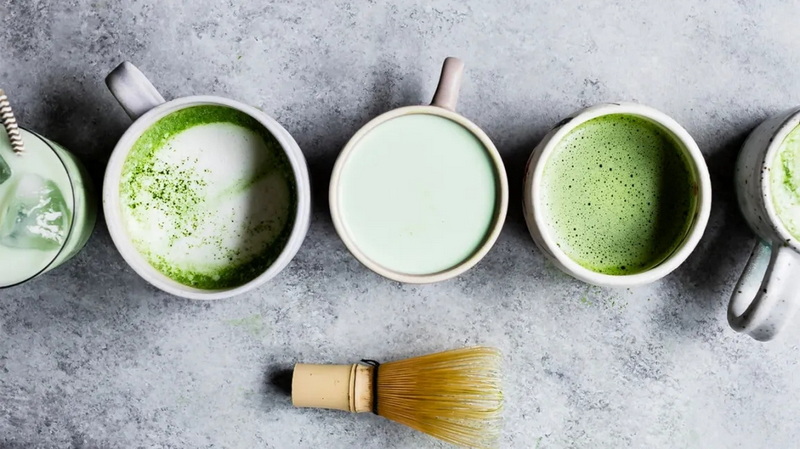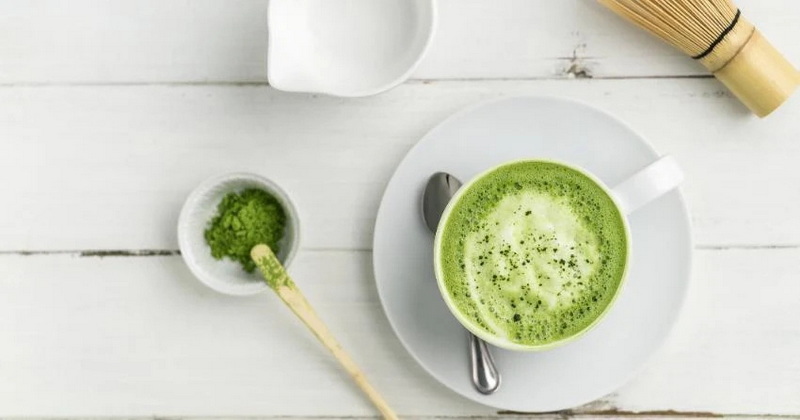Content Menu
● Introduction to L-Theanine
● Benefits of L-Theanine in Cosmetics
● Formulation Possibilities
● Challenges and Considerations
● Market Trends and Consumer Preferences
>> Consumer Awareness
>> Sustainability
● Scientific Research and Evidence
>> Clinical Trials
>> Mechanistic Studies
● Conclusion
● FAQs
>> 1. What is L-theanine and where is it found?
>> 2. What are the benefits of L-theanine in cosmetics?
>> 3. How can green tea extracts be formulated into cosmetics?
>> 4. What challenges are associated with using green tea extracts in cosmetics?
>> 5. Can L-theanine enhance collagen production?
● Citations:
Green tea, known for its numerous health benefits, has become a popular ingredient in both dietary supplements and cosmetics. One of the key compounds found in green tea is L-theanine, an amino acid renowned for its calming effects and potential cognitive benefits. In this article, we will explore why a 60% L-theanine extract from green tea is a top choice for cosmetic applications, highlighting its benefits, formulation possibilities, and the science behind its effectiveness.

Introduction to L-Theanine
L-theanine is a unique amino acid primarily found in the leaves of the Camellia sinensis plant, which is used to make green, black, white, and oolong teas. It is responsible for the umami taste in tea and plays a significant role in promoting relaxation and reducing stress levels without causing drowsiness. L-theanine's ability to affect neurotransmitters in the brain contributes to its calming effects, making it an attractive ingredient for both dietary supplements and cosmetics.
Benefits of L-Theanine in Cosmetics
While L-theanine is more commonly associated with dietary supplements, its potential benefits in cosmetics are substantial. Here are some reasons why a 60% L-theanine extract from green tea could be a top choice for cosmetic formulations:
1. Antioxidant Properties: Green tea extracts, including those rich in L-theanine, contain antioxidants like catechins, which can help protect the skin from oxidative stress and environmental damage. This can lead to improved skin texture and appearance.
2. Anti-Inflammatory Effects: The anti-inflammatory properties of green tea extracts can soothe irritated skin, reduce redness, and alleviate discomfort associated with sensitive skin.
3. Soothing and Calming Effects: L-theanine's calming properties can extend to the skin, potentially reducing irritation and promoting a sense of calmness, which is beneficial for sensitive skin types.
4. Collagen Synthesis: Some studies suggest that green tea extracts may enhance collagen production, leading to smoother, more resilient skin.
5. Hydration and Moisturization: Green tea extracts can help improve skin hydration by enhancing the skin's natural barrier function, making it more effective at retaining moisture.
Formulation Possibilities
Green tea extracts, including those with high L-theanine content, can be incorporated into a variety of cosmetic formulations:
1. Emulsions and Moisturizers: These can benefit from the antioxidant and anti-inflammatory properties of green tea, helping to hydrate and protect the skin.
2. Face Masks and Toners: The astringent properties of green tea can help tone the skin, reduce pores, and improve skin texture.
3. Scrub and Cleansers: Green tea extracts can add a soothing element to exfoliating products, making them more gentle on the skin.
4. Serums and Concentrates: High-concentration serums can deliver potent doses of antioxidants and L-theanine directly to the skin, enhancing their effectiveness.
5. Hair Care Products: Green tea extracts can also be used in hair care products to promote healthy hair growth and reduce dandruff due to their anti-inflammatory properties.
Challenges and Considerations
While green tea extracts offer numerous benefits, there are challenges to consider when formulating cosmetic products:
1. Stability of Antioxidants: Catechins in green tea are sensitive to oxygen and light, which can affect their bioavailability and efficacy in cosmetic products. Proper packaging and formulation techniques are essential to maintain their stability.
2. Skin Penetration: Ensuring that the active compounds in green tea extracts penetrate the skin effectively is crucial for maximizing their benefits. Formulators may use penetration enhancers or encapsulation techniques to improve delivery.
3. Concentration and Dosage: The optimal concentration of L-theanine and other green tea compounds in cosmetic products needs to be determined to ensure efficacy without causing irritation.

Market Trends and Consumer Preferences
The demand for natural and sustainable ingredients in cosmetics is on the rise, driven by consumer preferences for products that are both effective and environmentally friendly. Green tea extracts, particularly those with high L-theanine content, align well with these trends due to their natural origin and potential health benefits.
Consumer Awareness
Consumers are becoming increasingly aware of the benefits of green tea and its components, such as L-theanine. This awareness is driving demand for products that incorporate these ingredients, not just in dietary supplements but also in skincare and haircare products.
Sustainability
Green tea is generally considered a sustainable crop, as it requires less water and pesticides compared to other crops. This aspect appeals to consumers who prioritize environmental sustainability in their purchasing decisions.
Scientific Research and Evidence
While the benefits of green tea extracts in cosmetics are promising, ongoing scientific research is necessary to fully understand their effects and optimize their use in formulations. Studies focusing on skin penetration, bioavailability, and long-term efficacy will be crucial for advancing the field.
Clinical Trials
Conducting clinical trials to evaluate the efficacy and safety of green tea extracts in cosmetic products is essential. These trials can provide valuable insights into how different concentrations of L-theanine and other compounds affect skin health.
Mechanistic Studies
Understanding the mechanisms by which green tea extracts exert their benefits is vital for developing more effective formulations. Research into how L-theanine interacts with skin cells and influences skin health can guide the development of targeted treatments.
Conclusion
In conclusion, a 60% L-theanine extract from green tea is a valuable ingredient for cosmetic formulations due to its potential to enhance skin health through antioxidant, anti-inflammatory, and soothing effects. While there are challenges in formulating with green tea extracts, the benefits they offer make them a worthwhile addition to various cosmetic products. As consumer demand for natural and sustainable ingredients continues to grow, green tea extracts are poised to become increasingly popular in the cosmetics industry.

FAQs
1. What is L-theanine and where is it found?
L-theanine is an amino acid primarily found in the leaves of the Camellia sinensis plant, which is used to make green, black, white, and oolong teas. It is also present in some mushrooms.
2. What are the benefits of L-theanine in cosmetics?
L-theanine can contribute to the soothing and calming effects of cosmetic products, potentially reducing skin irritation and promoting relaxation. Green tea extracts also offer antioxidant and anti-inflammatory benefits.
3. How can green tea extracts be formulated into cosmetics?
Green tea extracts can be incorporated into emulsions, moisturizers, face masks, toners, scrubs, and cleansers to leverage their antioxidant, anti-inflammatory, and astringent properties.
4. What challenges are associated with using green tea extracts in cosmetics?
The main challenges include the sensitivity of catechins to oxygen and light, which can affect their stability and skin penetration.
5. Can L-theanine enhance collagen production?
Some studies suggest that green tea extracts may enhance collagen synthesis, leading to smoother, more resilient skin.
Citations:
[1] https://www.marknature.com/products/green-tea-extract-60-l-theanine
[2] https://formulabotanica.com/green-tea-cosmetic-formulations/
[3] https://www.sleepfoundation.org/sleep-aids/l-theanine-for-sleep
[4] https://patents.google.com/patent/CN102920630A/ja
[5] https://pmc.ncbi.nlm.nih.gov/articles/PMC9014247/
[6] https://pmc.ncbi.nlm.nih.gov/articles/PMC6930595/
[7] https://calgaryneuropathy.com/60-l-theanine/
[8] https://patents.google.com/patent/CN104366510A/zh
[9] https://www.iherb.com/blog/l-theanine/1446
[10] https://patents.google.com/patent/KR20090019949A/en
[11] https://www.medicalnewstoday.com/articles/324120
[12] https://patents.google.com/patent/CN105764476A/zh
[13] https://wearefeel.com/blogs/learn/what-is-ltheanine






























